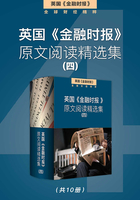
Online finder of lost dogs and teddies on a funding mission (575words)
By Chris Tighe
The kindness of strangers who try to help upset people find lost items or pets shows that impulse to do good. The desperate search for the lost teddy bear, family pet or child's hearing aid and the relief of retrieval provides a rich seam of human interest narrative.
Combine the two and you have Lostbox, based in the north-east of England. An online venture started by Mrs Owen after a chance event, it has 150,000 social media followers and a weekly reach, via shares and retweets, of 5m people. “I'm a big believer in fate,” she says. Maybe fate did intervene one winter night in 2012 outside Sunderland Football Club's stadium, when she trod on a small metal object and looked to see what it was.
The metal was a man's gold wedding ring, engraved “AJ à SC 16-06-90”. Recently married herself, Mrs Owen took it home and began trying via social media to find its owner. She soon realised how hit and miss this mission was.
Three years later, however, Stéphane Chambon, a French oil company executive who had attended a game at Sunderland, was traced and reunited with the ring. For him, it was a happy ending. For Mrs Owen, that search was just the beginning. “It completely changed my life.”
Despite running her own digital marketing and recruitment companies, Mrs Owen says she had no initial thought of making this a business. But after a year, and realising the unmet demand, she set up a website, Lostbox, as a place to post information and pleas for help.
Staffed by volunteers, Lostbox is financially supported by a recruitment company run by Mrs Owen and her business partner Phil Pringle. A prize, offering office space and support services worth about £100,000, has helped cover the costs for the past two years.
In that time, it has become the UK's largest online lost-and-found service. Meanwhile, many UK police forces are reducing their involvement in lost property because of budget cuts.
Lost dogs and toys are the biggest categories but war medals, a tortoise and false teeth and limbs are among the 40,000 items reunited so far with their owners.
Lostbox is run by 32 volunteers and one paid employee, plus Mrs Owen and Mr Pringle who regularly work 80-hour weeks. The venture is at a turning point. “It needs to be a commercial company to sustain it and keep up to date with the technology we need,” says Mrs Owen.
A free app, compatible with Apple and Android devices, was launched last month, providing “push notifications” of items lost in a specified geographical area, with lost and found colour coding. Lostbox has just moved to office premises in Gateshead, a Tyneside location that will make it easier to hire tech-savvy staff.
Paid-for merchandising, such as key rings, stickers, and luggage and dog tags, will be available shortly but the basic service will remain free.
To support this, Lostbox is negotiating advertising deals for products that are relevant to lost property. “We don't want to dilute our brand,” says Mrs Owen. Expansion overseas is on the cards too.
The office volunteers and the people who post found items and publicise it on social media do so “out of the goodness of their heart”, she says. “They're doing it because they want to get involved. They want to be the person who gets that buzz.”
She would like to pay some as part-timers but no promises have been made. “People appreciate the fact we've set up for the right reasons. But to sustain it, it has to make money,” she says.
请根据你所读到的文章内容,完成以下自测题目:
1.Lostbox is mainly staffed by what kind of people?
A.Those who lost their property
B.Mr Owen and Mr Pringle
C.Volunteers
D.Retired Police
答案
2.Why are many UK police forces reducing their involvement in lost property?
A.Because of budget cuts
B.The lack of workforce
C.Lost property reduced
D.The efficiency is too low
答案
3.What are the biggest categories of the lost property?
A.False teeth and limbs
B.War medals
C.Documents
D.Dogs and toys
答案
4.What problem does Lostbox meet now?
A.It is limited by its technology
B.It needs capital to sustain and support the technology
C.The staff turnover
D.The reduce of user
答案